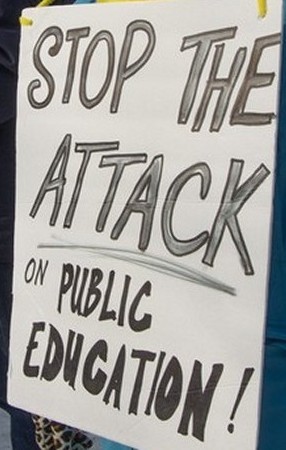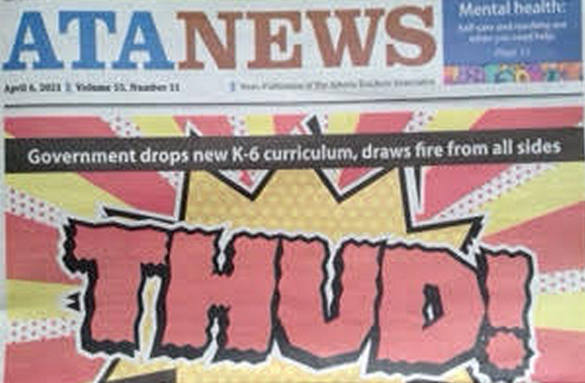May 24, 2021 - No. 48
It is a mysterious question, if you have a bean counter's mind: "Why do the arts matter at
all?" Perhaps you think
no one would miss the arts if you subvert arts authority and funding in
education. If so, you will be surprised to learn that large numbers of
Canadian workers depend for economic subsistence on the arts: on
literature; poetry, novel and short story writing; music; drama;
theatre arts; design, lighting, and sound technologies; dance; film,
and on visual art: architecture, industrial design, animation,
photography, illustration, printmaking, drawing, painting, and
sculpture.
 In June 2016, the website Canadian Art published some economic facts concerning the arts and
the economy
taken from a bulletin from Hill Strategies: "...the estimated direct
economic impact of Canada's culture industries (also known as value
added or gross domestic product) was $61.7 billion in 2014, or 3.3
percent of the country's
GDP.
In June 2016, the website Canadian Art published some economic facts concerning the arts and
the economy
taken from a bulletin from Hill Strategies: "...the estimated direct
economic impact of Canada's culture industries (also known as value
added or gross domestic product) was $61.7 billion in 2014, or 3.3
percent of the country's
GDP.
"Nationally, the bulletin says, the GDP of culture industries is
much larger than the value added of agriculture, forestry, fishing and
hunting ($29 billion); accommodation and food services ($38 billion);
and utilities ($43 billion).
"Hill Strategies also notes that estimates of the direct economic
impact of culture ($61.7 billion) is 10 times larger than that of
sports ($6.1 billion). Similarly, the jobs estimate in the culture
sector (700,100) is almost seven times larger than the estimate for the
sports sector (103,700). (The jobs figures include full-time and
part-time jobs, while
part-year employment is included on a pro-rated basis.) All of Hill
Strategies' findings are based on Statistics Canada's Provincial and
Territorial Culture Indicators, 2010 to 2014."
Creativity has become a trait required in many jobs, high-tech or
not. But the real reason why art matters has exposed itself during this
pandemic when real life encounters with art have been impossible: it is
due to the human need to celebrate our collective and individual
humanity, our need for human-to-human connection, and for
examination of solutions to urgent human-to-nature problems. It is
about the heart, human aspiration, saving the environment. How can we
build a better world?
Since creativity can be nurtured and developed with proper
education, the minimum aim of any school arts curriculum adequate to
the age must be to bring the youth up to the present day in visual
literacy and technique, in feeling for the cultural achievements of
humanity. It must imbue them with the conceptual ability and heartfelt
ambition
to advance humanity's cultural wealth.
The ongoing outcry from multiple quarters in Alberta over the
proposed new K-6 curriculum delivered by Jason Kenney's United
Conservative Party (UCP) government is a sign something has gone
dreadfully wrong.
From the Alberta Teachers' Association (ATA),
to the Lethbridge Herald;
Alberta Native News;
the Red Deer Urban Aboriginal Voices Society; the
Northwest Territories Department of
Education, Culture and Employment; the Alberta New
Democratic Party; the organization We're Together Ending Poverty;
to tens of thousands of individual
commentators, dismay, outrage, fear and anger prevail over the UCP
curriculum. Dr. Carla Peck, professor of Education, Social Studies
and Pedagogy at the University of Alberta, calls the Social Studies
section "Repulsive, Regressive and Racist." At last count 56 school
boards in the province, representing 93 per cent of students, are
refusing to pilot it. The ATA is calling for its complete
withdrawal,
and there is very broad support for this stand.
 People
wish their children to thrive in school. This curriculum will make
learning difficult for most, impossible for many. Why? It ignores best
educational practice of fitting stages of learning to childhood
development, each stage building upon the previous towards an age and
developmentally appropriate learning. This program will take the
horse to water, but will not get him to drink.
People
wish their children to thrive in school. This curriculum will make
learning difficult for most, impossible for many. Why? It ignores best
educational practice of fitting stages of learning to childhood
development, each stage building upon the previous towards an age and
developmentally appropriate learning. This program will take the
horse to water, but will not get him to drink.
Since my personal area of expertise is visual art and art education,
I am taking an informed look at that section of the draft K-6
(elementary) curriculum where art is a compulsory subject. Both how to
produce art and how art is a social testimony unique to its own
historic era are important questions a curriculum must answer.
Groups of art teachers, consultants, and supervisors working
together in the early 1980s produced a well-packed, comprehensive
Alberta art curriculum for elementary and secondary levels. UCP
"experts" have
picked over this curriculum to "coldly furnish forth the wedding
tables" with their own hasty dish. That is, this UCP elementary
program,
pompously referred to as "foundational principles," mishmashes a
pitiful few of the ideas and methods considered critical in the 1980s.
Leftovers, reheated. Without a plan. With nothing new or relevant to
current issues. Heavy on abstract terminology, unsuited to
developmental levels of elementary students, dreadfully lacking in
coherence, treating Indigenous Nations' thought material as irrelevant
-- both as concerns their own culture and on their relations with the
dominant and dominating culture.
This curriculum defeats the pull of curiosity, the pleasure of
discovery, the natural drive to fairness. Experiencing repeated
disinterest, a child will soon conclude arts education is not for her
or him. This is the fear of parents, whoever loves a child, that the
UCP approach will kill the joy of making art, will make the child hate
it.
Drawing, painting, beading, modeling, carving, building, for the
simple joy of doing it is not mentioned. The aim to improve in
technique through guided practice is not mentioned. The proper use of
materials is not mentioned. Have they mentioned the issue of having a
teacher properly art educated as critical?
Art Literacy Through Art Encounters
The '80s curriculum mandated "encounters" with artworks from history
linked to concepts at every level of teaching. By observing well-known
pieces, students practice using the vocabulary of art to figure out
what is going on. Why have people preserved and made the object famous?
Students primarily interested in making art will observe such
details as the type of paint stroke, the tints, shades, values of the
colours, the paint thickness, the surface quality, whether a glaze can
be detected. Students interested in philosophy will observe the
connections between the thought of a certain period and the style of
that period's art.
If social history is their interest, they will take note of key events
providing the topic for important works.
A
great deal of abstraction of human history can be brought to life
through the artworks of any period: sculptures, mural and easel
paintings, films, etc. Thus the art teacher requires a full
acquaintance with social history, the underlying philosophies
prevalent, the reasons why change happens. Humans keep aspiring to a
better world! For this
wealth of human cultural labour to make sense and be of use to the
teacher and the student, a curriculum must set it out coherently,
sequentially, rationally.
 Unfortunately, such structure is lacking in UCP thought. The desire
to cement the status quo of cartel party authority to run society on
behalf of the wealthiest oligopolists drives absurdities of
hypocritical moralism, pious wishes for truth and goodness combined
with absurdly chaotic, inappropriate choices of art concepts and
encounters. Hard
to disagree with ATA observation: "Government drops new K-6 curriculum,
draws fire from all sides. THUD!"
Unfortunately, such structure is lacking in UCP thought. The desire
to cement the status quo of cartel party authority to run society on
behalf of the wealthiest oligopolists drives absurdities of
hypocritical moralism, pious wishes for truth and goodness combined
with absurdly chaotic, inappropriate choices of art concepts and
encounters. Hard
to disagree with ATA observation: "Government drops new K-6 curriculum,
draws fire from all sides. THUD!"

